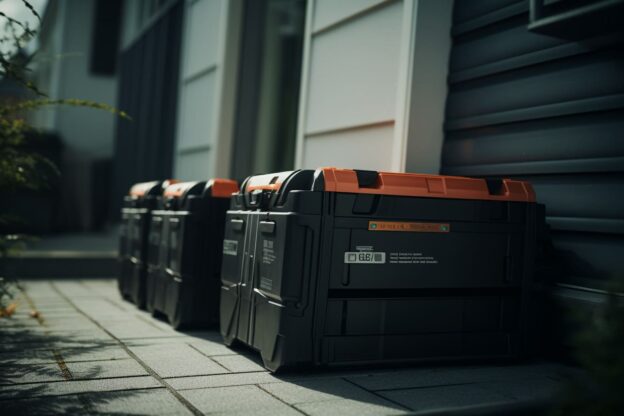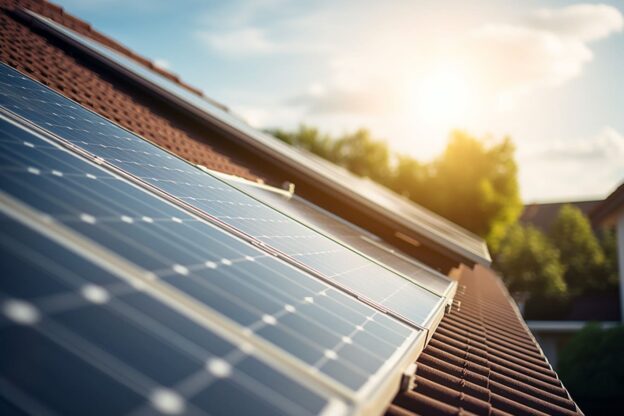Solar shingles, also known as building-integrated photovoltaics (BIPV), are solar cells designed to look like regular asphalt roof shingles. They generate electricity from sunlight while also protecting your home like traditional roofing. If you need a new roof and want to go solar, solar shingles may be an appealing option. But are they right for your home and budget?
How Do Solar Shingles Work?
Solar shingles are made of thin-film solar cells laminated between layers of regular shingle materials. Wiring connects the shingles together into a grid, allowing the generated electricity to be collected and fed into your home’s electrical system. Beyond the solar cells, solar shingles are installed just like asphalt or composite shingles.
Benefits of Solar Shingles
- Aesthetically Pleasing – Solar shingles have a similar appearance to conventional roofing materials. This avoids the obvious solar panel look that some homeowners want to avoid.
- Fully Integrated System- Rather than adding solar panels on top of existing shingles, solar shingles integrate the solar cells directly into your roof. This results in a sleek, streamlined look.
- Durable and Long-Lasting – Reputable solar shingle products are engineered to withstand extreme weather conditions while generating energy for decades. Most come with 25+ year warranties.
- Lower Installation Costs – With no racking or mounting equipment needed, installing solar shingles can cost less than adding traditional solar panels.
- Increased Home Value – Home buyers are increasingly interested in solar power and energy efficiency. Solar shingles can boost your home’s value and appeal.
Considerations Before Installing Solar Shingles
- Higher Cost Per Watt – While installation costs may be lower, solar shingles cost more per watt of solar generating capacity than traditional panels.
- Lower Efficiency – Most solar shingles have efficiency ratings of 10-20%, while panels are typically 15-25% efficient. More roof space is needed for the same output.
- Limitations on Roof Style and Pitch – Solar shingles only work on certain roof types and pitches. Your roof must be in full sun and generally south facing.
- Availability and Contractor Expertise – Solar shingle products are still somewhat niche. Availability is limited in some regions, as is installer experience.
When Do Solar Shingles Make Sense?
Solar shingles can be a smart choice when:
- You need a new roof soon anyway
- You prefer the integrated, low-profile look
- Your roof meets the necessary requirements
- Higher cost per watt is justified by aesthetics and home value
- Local product availability and trained installers
For many homeowners needing roof replacement, the benefits of solar shingles outweigh the modestly higher price. Work with a solar-savvy roofer to decide if they are the right solution for you.
Real-World Examples of Solar Shingles
- Tesla’s solar shingle offering integrates with their Powerwall battery for energy storage. Total install costs are competitive with a new premium roof plus solar panels.
- CertainTeed’s Apollo II solar shingles boast over 60 years of product testing and proven extreme weather performance.
- Dow Powerhouse shingles enabled this California home to generate 70% of its electricity demand from an integrated solar roof.
Key Takeaways on Solar Shingles
For homeowners needing a roof replacement, solar shingles can provide an aesthetically pleasing, integrated solar system. Consider all factors like costs, efficiency, roof requirements and product availability in your area. With the right home and goals, solar shingles can be a smart investment in renewable energy.


